Where do bees sleep?
rcwebberDear Annalisa,
Sleep is important for lots of the animals on our planet. Just like you need a good rest, so do bees. But, bee sleep is different than human sleep.
Read More ...Dear Annalisa,
Sleep is important for lots of the animals on our planet. Just like you need a good rest, so do bees. But, bee sleep is different than human sleep.
Read More ...Dear Sophia,
There are quite a few foods that are sweet and good to eat. A lot of them are fruit, said my friend Pablo Monsivais. He’s an associate professor at the Washington State University Elson S. Floyd College of Medicine.
Read More ...Dear Addison,
When snow piles up and compresses into a thick mass of ice, we call it a glacier. But a glacier is really more than ice and snow.
Read More ...Dear Nisi,
All around the world bees are busy turning nectar from flowers into sweet, golden honey. That’s what I found out from my friend Brandon Hopkins, a honey bee researcher at Washington State University.
Read More ...-Ravin, 11, London, England
Dear Ravin,
All plants need water to survive. Those that live in places where water is scarce use some interesting strategies to stay alive.
That’s what I found out from my friend Charles Cody, who manages one of the greenhouses at Washington State University. When I went to visit the greenhouse, he pointed out a few different cacti.
One was tall and cylindrical with big spines. Another was small and round with what looked more like little hairs. A rainforest cactus hung on the wall like a vine.
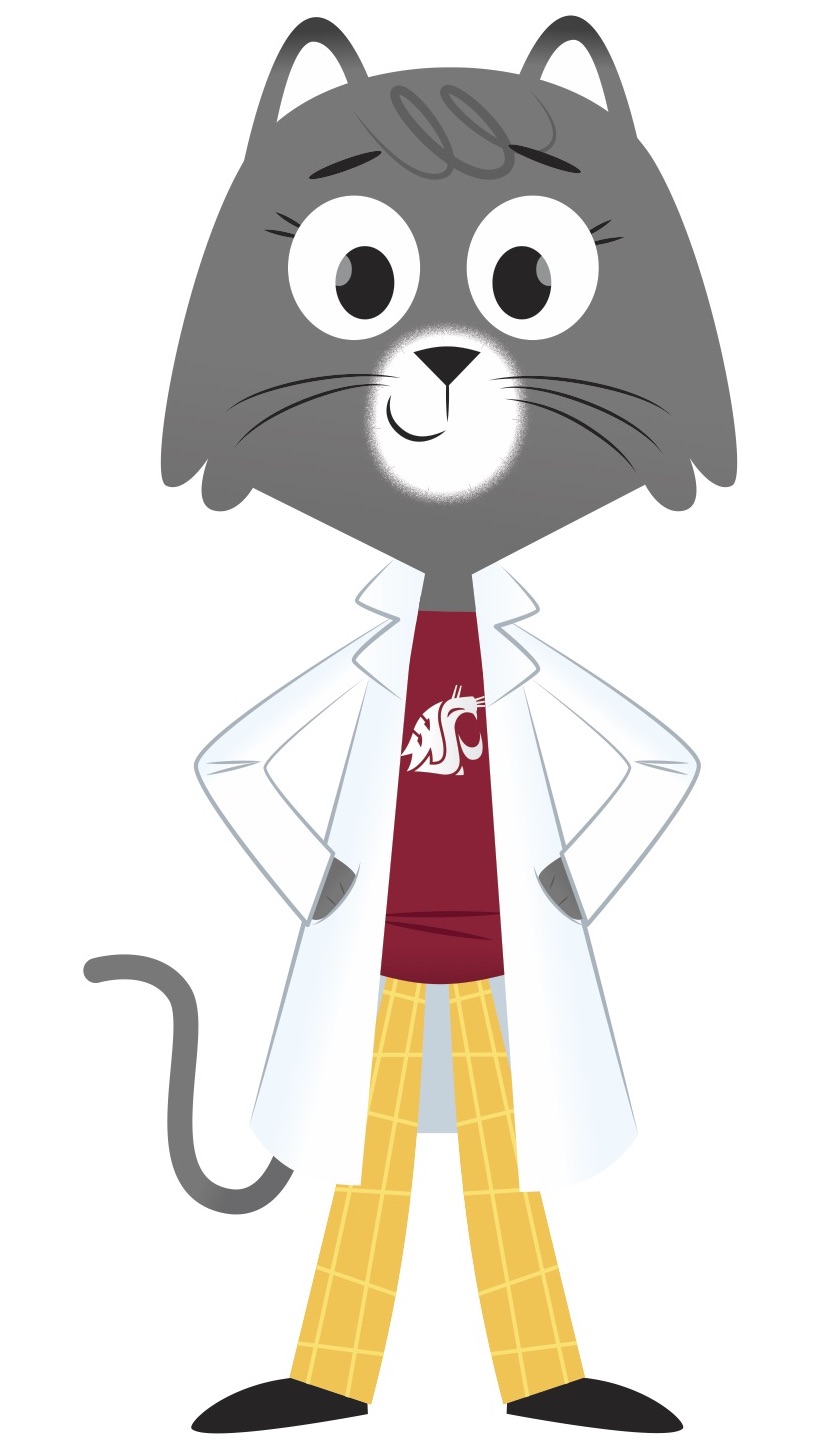 Cody explained that if … » More …
Cody explained that if … » More …
Dear Courtney,
That’s a great observation. When it rains, worms sometimes leave their home in the soil and wiggle their way up to the surface, where we see them on sidewalks and roads.
Read More ...Dear Presley and Brianna,
So far, we’ve investigated how recyclables like plastic, aluminum, and paper can end up in the trash. If our clothes get damaged, or we simply outgrow them, we might toss them in the trash, too. Or send them to a thrift shop. Either way, they often end up buried in a landfill.
Read More ...Dear Presley,
If you’re anything like me, maybe one of your weekly chores is helping take out the trash or making sure all your tuna cans get into the right recycle bin. The truth is, I wasn’t entirely sure where the garbage goes either, so I decided to ask my friend Karl Englund.
Read More ...Dear Asma and Friends:
Lots of bees have pointy behinds, but not all of them. The ones that do have a pointy behind, or a stinger, can use it to help defend their homes, food, and fellow bees. That’s what I found out from my friend Megan Asche, a graduate student at Washington State University who studies honey bees and takes super close-up photos of insects.
Read More ...Dear Zack,
You aren’t alone if you’ve ever heard someone at the dinner table say, “you’ve got to eat your broccoli.” Broccoli is one of nature’s superfoods, so it’s no wonder we are often encouraged to eat those little green trees.
Read More ...It all started with a question: How can we help students in our community learn about STEM?
The answer from many local educators was access to more science materials. Dr. Universe wants to make sure kids (our future scientists and engineers) have the materials they need to learn about science, technology, engineering, and math.
Ask Dr. Universe is based out of Washington State University, a public research university committed to a tradition of service and access to education.
March 14-April 30
*Special dates for … » More …
Read More ...Dear Karthikeya,
Bird feathers are interesting. There are so many types, shapes, and colors. My friend Daniela Monk is a Washington State University professor who studies avian ecology, or the study of birds.
She told me about why the birds we know today have feathers and how they got them. Researchers believe that birds evolved from dinosaurs a very long time ago.
“One lineage of dinosaurs gave rise to birds,” Monk said.
Researchers around the world are finding dinosaur fossils that contain feathers. A fossil is the remains of a very old animal or plant that is preserved in a rock. From these fossils they … » More …
Read More ...Dear Charleigh,
Whenever there’s heavy rains or winds, butterflies seem to disappear. This is because butterflies hide when it rains. That’s what I found out from my friend David G. James who is an associate professor at Washington State University. He studies insects, including butterflies, in the Pacific Northwest.
Read More ...Dear Brianna,
A parasite is an organism that steals resources from another organism in order to survive. Our planet is home to all kinds of parasites and organisms that host them.
Read More ...Dear Lucy,
There are a lot of different grasshoppers living on our planet. In fact, scientists have discovered more than 11,000 species. Exactly how these grasshoppers spend their winter depends on what kind of winter they experience.
Read More ...Dear Jada,
If you were to travel around the world, the word “science” might look or sound very different. In Spanish, it’s ciencia. In Japanese, 理科. In German, wissenschaft! And in French…well, it’s also science. But with an accent.
Read More ...Dear Pablo,
We might not always think about it, but every day gravity keeps us pulled to the Earth. It’s what brings us back down when we jump on a trampoline. It’s why a Slinky tumbles down stairs.
Now think about what it would be like to live in a place with very little gravity. Let’s say you were 200 miles off the ground, orbiting earth in the International Space Station. Here, the idea of up and down really gets flipped around.
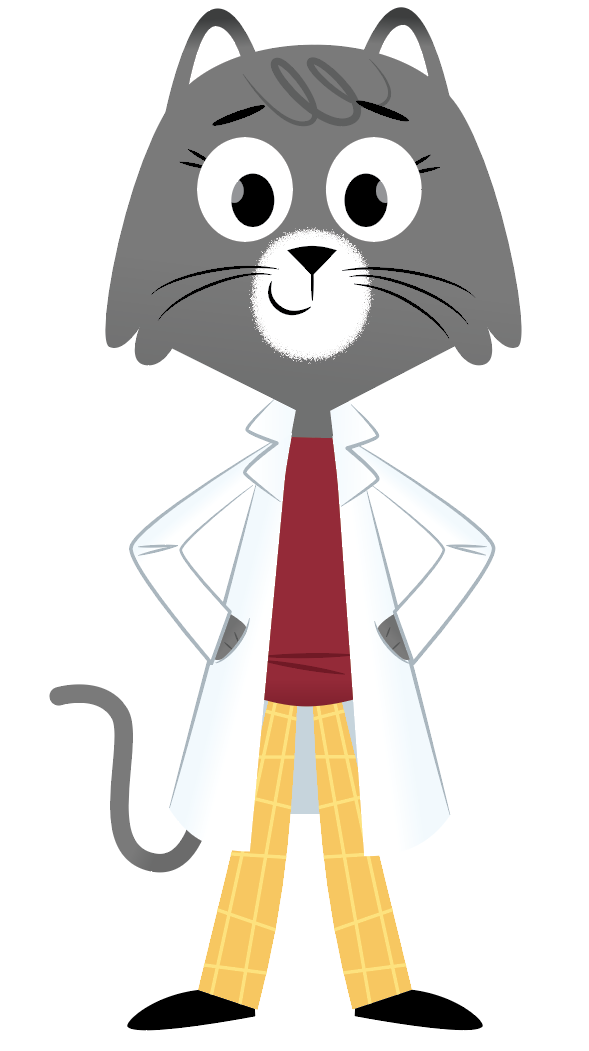 On Earth, the human balance system helps the head figure out how move up … » More …
On Earth, the human balance system helps the head figure out how move up … » More …
Dear, Finn, Emily, and friends:
When a raindrop falls from a cloud, there are quite a few places it could end up.
Read More ...Dear Jose,
We live in a world filled with all kinds of smells. Take off a pair of tennis shoes after a long day and you might even get a whiff of something pretty stinky. You can blame it on your bacteria. Millions of these tiny things live on your feet.
Read More ...Dear Joseph,
If you’ve ever had a headache, it might have felt like pain was radiating right out of your brain.
Read More ...Dear Leah,
If you’re like me, you’ve picked up a little dandelion fluff ball and blown the seeds around. Weeds like these make a lot of seeds. They get picked up by the wind and planted far and wide. And as you observe, they grow pretty fast, too.
Read More ...Dear Bushra,
Our ancestors weren’t very picky eaters. In fact, they ate pretty much whatever they could find, wherever and whenever they could find it.
Read More ...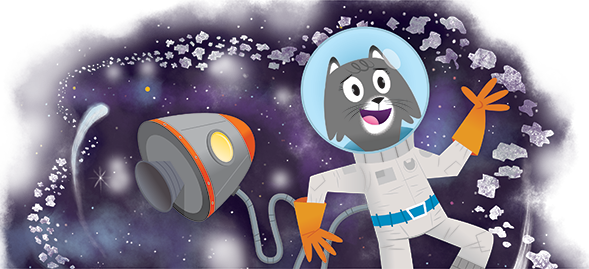
Dear Rhemi,
Astronauts eat all kinds of different foods up in space. The food is often similar to what we have here on Earth. But in space, there’s very little gravity. There’s very limited refrigeration, too. On the International Space Station, the refrigerator is only about half the size of a microwave. That means scientists who prepare and package astronaut food have to do it in ways that take up very little room and don’t need to be kept cold.
Read More ...Dear Kalitia,
Believe it or not, pretty much all animals shed their skin. Some animals make it a bit more obvious than others. Snakes, and some other reptiles, will often shed all at once.
Read More ...
Dear Jax,
Animals make their journeys to islands in different ways. Some float. Some fly. Others will swim.
Read More ...Dear Pranav,
If you’re anything like me, one of the first things you’ll do in the morning is check the weather. Sometimes it’s rainy and I’ll put on my rubber boots. Other days it’s really sunny and I’ll grab my sunglasses. When we look at the patterns of these weather conditions over a long time—sometimes over hundreds of years—we can learn about a place’s climate.
Read More ...Dear Tanya,
You know it’s springtime when animals start coming out of hibernation. That includes ladybugs that crawl out from their cozy winter hiding places.
Read More ...Dear Daiwik,
If you are anything like me, you like watching the night sky. The stars we see are a lot like our nearest star, the sun. They are just much farther away. That makes stars look like small twinkly things instead of a big, furious thing like our sun.
Read More ...Dear Karen,
When it comes time for bumble bees to find a home, it’s pretty much up to the queen bee.
That’s what I found out from my friends Rachel Olsson and Elias Bloom. They are graduate student researchers here at Washington State University and really curious about bees, too.
Read More ...Dear Madeline,
You’re right. It can take a really long time for some things to decay.
If we buried an apple peel in the backyard it might only take a few weeks to break down into the soil. But if we buried a plastic water bottle, it would probably still be there hundre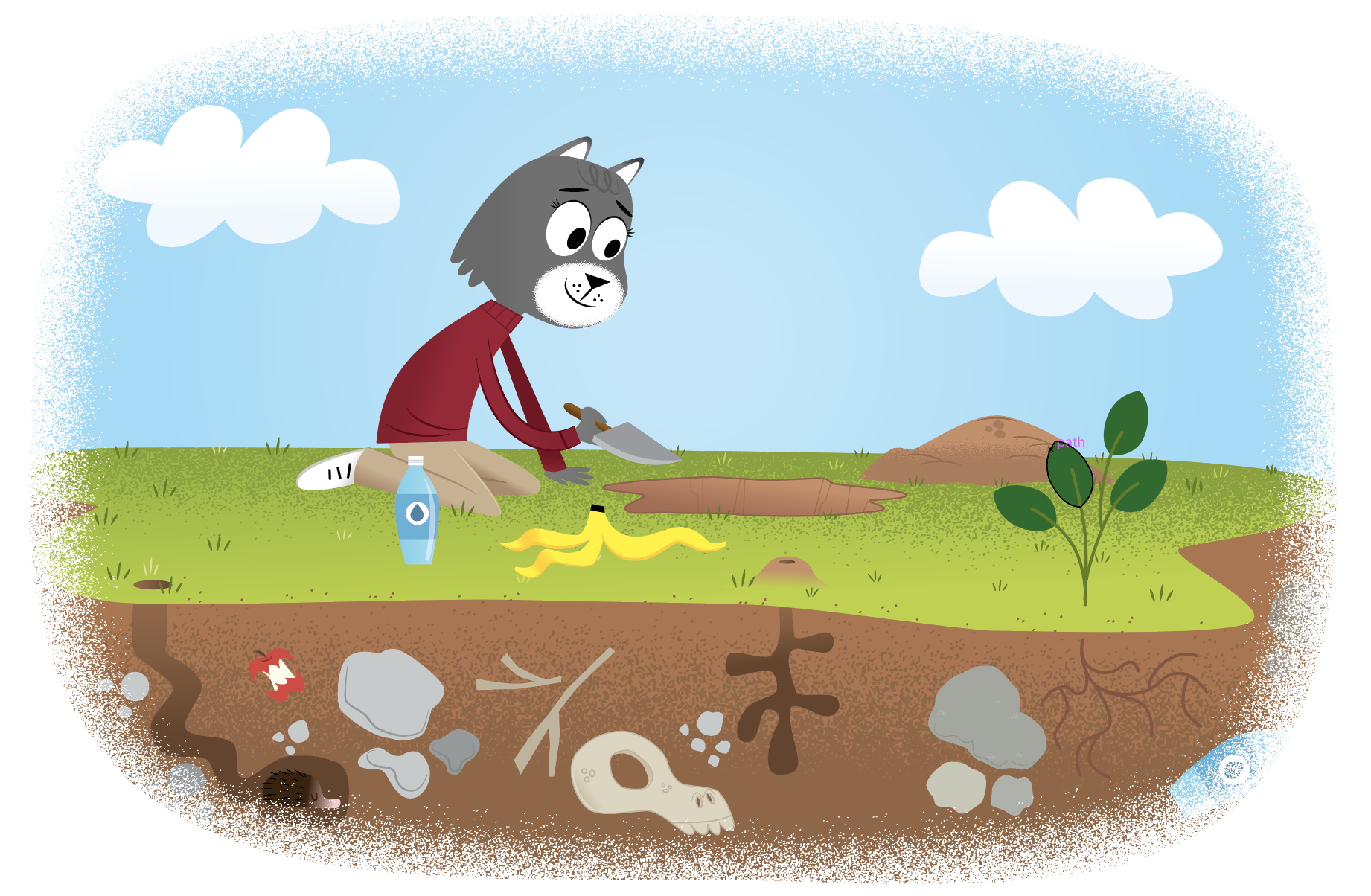 ds of years from now.
ds of years from now.
Dear Silas,
There are more than a billion cows on our planet and they all need to burp. Just like us, they burp to get rid of extra gas in their stomachs.
Read More ...What kinds of trees are in your backyard? Do they have pinecones? Colorful leaves? Pods with seeds? Tell us more or send a picture to Dr.Universe@wsu.edu.
Dear Jessy,
As I was hiking through the bristlecone pine forests of the Sierra Nevada recently, I stumbled upon a tree barely six inches tall.
Read More ...Dear Lucy,
Ever since I was a kitten, I’ve loved picking up big maple leaves in the fall. I’d take them home, put them under a piece of paper, and rub the side of a crayon over the top. It makes a great print of the leaf.
Read More ...Dear Emily,
Just the other day I was biting into a crunchy, delicious red apple when I was reminded of your question. I started wondering why apples are red, too.
Read More ...Dear Kera,
Try as we might, it can be hard to hold back tears while chopping up onions.
Read More ...Dear Kristen,
Our sun is really one big star. And there are billions and billions of stars in our universe.
Read More ...Dear Lawrence,
Deep underwater, not too far from Guam, lies a crescent-shaped canyon called the Mariana Trench. It is home to the deepest known spot in the ocean: The Challenger Deep.
Read More ...Dear Emily,
If you’ve ever had flat soda, you know a sip isn’t the same without some fizzy bubbles. We can hear them pop and feel them burst on our tongue.
Read More ...Dear Phillip,
Iron is found in buildings and skyscrapers. It makes up most of the Earth’s core. It’s even found in the Sun and stars. And yes, it’s also in a bowl of cereal.
Read More ...Dear Sophia,
Yes. The water on our Earth today is the same water that’s been here for nearly 5 billion years. Only a tiny bit of it has escaped out into space. As far as we know, new water hasn’t formed either.
Read More ...Dear Garrett,
You know, your question reminds me of a couple other science questions from curious readers. Evangeline, age 7, wants to know why her hair is black. Sureya, age 8, wants to know why some people have curly hair.
It just so happens that one of my favorite science projects explores our questions about what makes us unique. It has to do with our DNA, or the blueprint for life.
Read More ...Dear Oscar,
A couple months before you were born, your skeleton was soft and bendy. It was made out of cartilage, the same material that’s in your nose and ears now. But when certain cells in your body called osteoblasts and osteoclasts began to work together, new bone started to form.
Read More ...Dear Francesco,
Last fall, my friend Lee Kalcsits and I went exploring in the apple orchards of Wenatchee. The apples were ripe and the leaves were changing from green to gold. We plucked a few leaves and took them back to his lab.
Read More ...Dear Jasmine and Marie,
There’s something about a chameleon’s darting eyes, long tongue, curled tail, and ability to climb that makes it a fascinating animal to watch. Especially when it’s changing colors.
And the latest research on your question suggests that how a chameleon changes has more to do with light than scientists once thought.
Read More ...Dear Cynthia,
While walking in the woods with my friend Gary Chastagner, we stumbled upon some old tree stumps. The stumps had so many rings we had to use our magnifying glasses to see them all.
Read More ...Dear Autumn,
Stomachaches happen for lots of reasons, but they can often be traced back to tiny invaders in the human body: germs.
Read More ...Dear Aditya,
When bees make hexagons in their hives, the six-sided shapes fit together perfectly. In fact, we’ve actually never seen bees make any other shape. That’s what I found out when I visited my friend Sue Cobey, a bee researcher at Washington State University.
Cobey showed me some honeycombs where the female bees live and work. Hexagons are useful shapes. They can hold the queen bee’s eggs and store the pollen and honey the worker bees bring to the hive.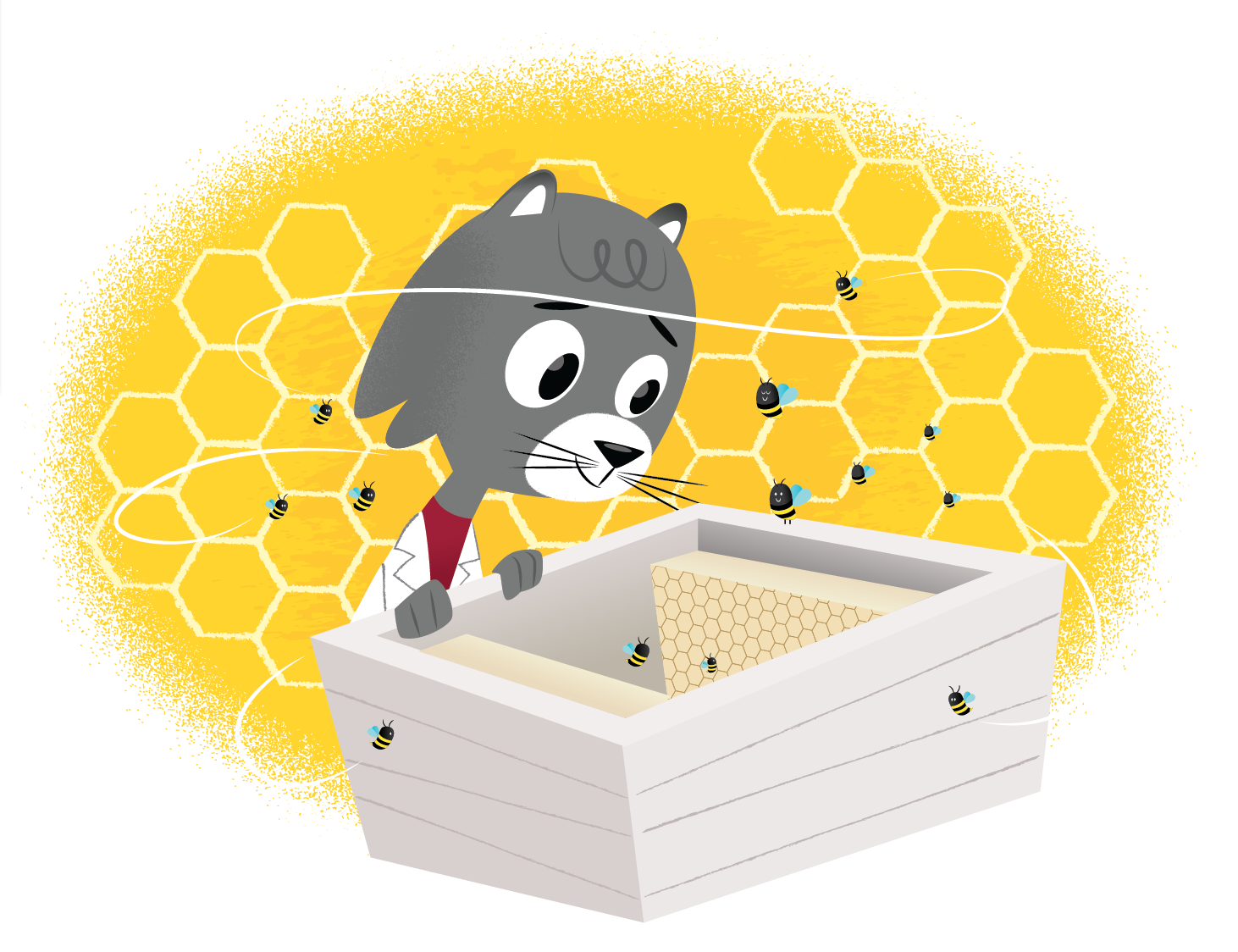
When you think about it, making circles wouldn’t work too well. It would leave gaps in the honeycomb. The worker bees could use triangles or squares for storage. Those wouldn’t leave gaps. But the hexagon is the strongest, most useful shape.
Read More ...Dear Andres,
If it weren’t for greenhouse gases, Earth would be an extremely cold, deserted planet. Plants couldn’t grow and animals like us wouldn’t be able to survive.
Read More ...Dear Jack,
When we dig up fossils from the Earth they can tell us a lot about life in the past.
Read More ...Dear Lily and Heidi,
Well, we don’t know for certain. Looking up to the stars at night, I’ve often wondered if alien cats are out chasing alien mice or taking naps on other planets.
My imagination aside, your questions are like those scientists are asking, too. And it’s no wonder we are so curious.
With billions of planets in our galaxy, including small Earth-like worlds, the possibility of life out there is an exciting thought to many people. So, humans have set out to look for planets that might support life.
In fact, this month scientists announced the Kepler spacecraft’s discovery of … » More …
Read More ...Dear Brook,
Microchips are smaller than your fingernail and packed with itty-bitty electronic parts. These parts are hundreds of times thinner than the hairs on your head, but sometimes you’ve got to think small to think big.
Read More ...Dear Zoe,
Scientists could see and feel electricity in nature long before they discovered how to make it. Maybe you’ve seen it during a powerful electrical storm or felt a little shock from static electricity.
It happens because of tiny parts of atoms. They’re called electrons and they are everywhere.
Read More ...Dear Eston,
Springtime sets the stage for one of the greatest transformations in the natural world.
“It’s the construction of a butterfly or moth from caterpillar soup,” said my friend David James, an entomologist at Washington State University. James studies the science behind metamorphosis, or how a creature transforms.
Read More ...Dear Alexa,
My friend Kate Evans said the answer really depends on whether you want the perspective of a person, a plant, or even a cat. Evans is a plant scientist at Washington State University in Wenatchee, where she investigates fruit in the Apple Capital of the World.
She explained how long ago, wild apples actually grew in forests. Without farmers around to plant them in orchards, trees had to scatter their own seeds to survive.
For some trees, the key to survival is growing sweet, ripe fruit.
Read More ...v
Dear Jay,
We can use all kinds of animal, bug, and plant materials to make cloth. Even some of the tiniest living things on the planet can make cloth, too.
I heard about this from my friend Hang Liu, a Washington State University professor who studies the science of materials we use and wear every day.
Read More ...Dear Elliot,
You are onto something. Quick, to the bat-lab! That’s where I met up with my friend Christine Portfors, a scientist at Washington State University who studies fruit bats.
Portfors explained that while bats don’t quite have habits like humans, they do have behaviors.
Bats are nocturnal. They sleep during the day and wake up in the early evening. The first thing they’ll do when they wake up is fly around and around their caves for a while.
Read More ...That crud is their food, Elliott. That’s what I learned from Steve Sheppard. He studies bees here at WSU.
Read More ...
Dear Philip,
If you’re thinking of making a suit of rubber, forget it. It won’t work. There is nothing lightning won’t come near. It is unpredictable and very powerful, so just get that rubber suit out of your head.
Read More ...Media

Ask Dr. Universe is a science-education column from Washington State University. If you wish to obtain copyright permission for use of content which appears weekly on the Ask Dr. Universe website, please send a request to my assistant Melissa Mayer at melissa.j.mayer@wsu.edu.
Read More ...Got a science question? Any question?
Dr. Universe answers science questions from children with the help of Washington State University scientists. She teamed up with her friends at Northwest Public Broadcasting to bring some of those curious questions to life. Parents can help submit their children’s questions using the question form.
Hey cool cats, I’m Dr. Universe, here to answer your baffling science questions like this one. How do bones form? Most humans have 206 bones. But did you know, you are actually born with about 300? Before you were born, your skeleton was soft and bendy. Then when you were a … » More …
Read More ...